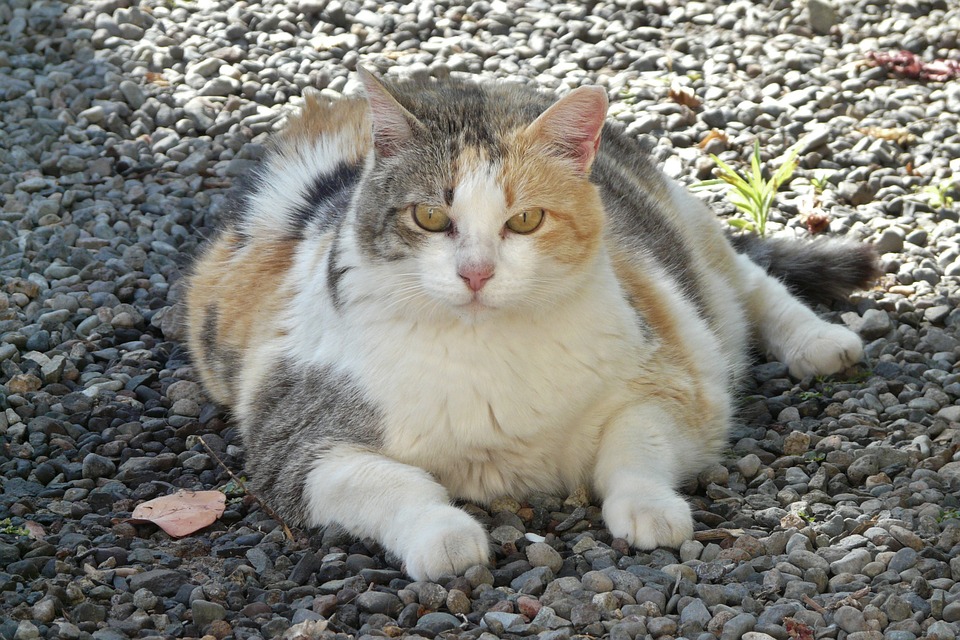 Fat cats may be welcome at political fundraisers, but on your sofa, it’s another story. If Fluffy seems to be putting on the pounds, she’s not alone. Half the pets in the U.S. are overweight, and – just like it does for their human companions – it can create serious health problems. Warren Eckstein offers some advice to help you get your cats and dogs in good shape. Read some of his tips below. Fat cats may be welcome at political fundraisers, but on your sofa, it’s another story. If Fluffy seems to be putting on the pounds, she’s not alone. Half the pets in the U.S. are overweight, and – just like it does for their human companions – it can create serious health problems. Warren Eckstein offers some advice to help you get your cats and dogs in good shape. Read some of his tips below.
OBESITY IS considered the most common form of malnutrition in cats and dogs. In fact, half the pets in America are considered obese or overweight. Dogs and cats can easily become overweight and it’s often hard for owners to recognize because the weight gain is so gradual, and they also don’t realize the impact a few extra pounds can have. One or two pounds may not sound like a lot, but for a 10-pound cat or small dog, this is equivalent to a person gaining more than 25 pounds. How can you tell if your pet is overweight? You should be able to feel their ribs. They shouldn’t be emaciated, of course, but you shouldn’t have to dig for them either. The excess weight can reduce the length of a pets’ life by as much as 20 percent – in humans, this would equal nearly 15 years. Obesity can cause or exacerbate serious medical problems like hip dysplasia, arthritis, diabetes and respiratory problems. Keeping your pet healthy and physically fit requires both the right food and the right exercise. TIPS TO CARE FOR YOUR OVERWEIGHT, LESS ACTIVE PET: Less is more: Reduce your pet’s caloric intake by feeding him less, but more frequently and measuring the portions you feed him. Sometimes feeding out of several dishes is beneficial. You can start out by cutting down the amount of food your cat or dog eats. If it’s normally three cups a day of dry food, you can cut it to two. And to make it more appetizing, you can add no-fat chicken or beef bullion. If they eat canned food, you can dilute it with water. No people food: Thirty percent of pet owners admit feeding Fluffy or Rex table scraps. Omit feeding him food from the table or scraps during food preparation. Cut back on snacks: Reduce the number of high-calorie treats you feed your pet each day. Also, more than half of pet owners say they feed treats to their furry family members as a way of showing affection. There are low-calorie alternatives to high-fat, store-bought snacks. Try carrots or melon. Feed reduced-calorie formula: Many leading cat and dog food brands have a line for ‘less active’ pets and for ‘senior’ pets. When you do switch food, make sure If you have a finicky pet that doesn’t like the diet food, try heating the food up for a second or two. It makes it smell better, and animals really respond to smell. Combine exercise with diet management: Of course, the most obvious is walking or running with your dog. But you can also try puppy push-ups, dancing with your pet, staircase sprints, nerf ball for city dwellers, tether ball, sit-ups and monkey in the middle. Make certain plenty of fresh drinking water is available at all times. Feeding schedule: Ideally, only one person should feed the pet, or have a strict feeding schedule so the pet is not accidentally fed twice. Also, reduce competition. Multiple pets often compete for food, so separate them at mealtime. He suggests literally putting one pet in another room and shutting the door when you are feeding the other – not just separate dishes. Also, if you have a cat and a dog, you can raise the cat food out of the reach of the dog. And, just like with humans, moderation is key. You can give them a taste of peanut butter, but not the whole jar. |
|

 you do it gradually, mixing in the new food with the old over a 7-10 day period, and as a double-check, always consult with your veterinarian before placing your pet on a weight management program because some diseases such as hypothyroidism and Cushing’s disease can cause weight gain. Try giving your pet smaller meals, more frequently. This is a good strategy. Three times a day is a good goal.
you do it gradually, mixing in the new food with the old over a 7-10 day period, and as a double-check, always consult with your veterinarian before placing your pet on a weight management program because some diseases such as hypothyroidism and Cushing’s disease can cause weight gain. Try giving your pet smaller meals, more frequently. This is a good strategy. Three times a day is a good goal.